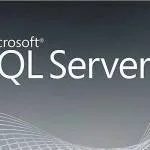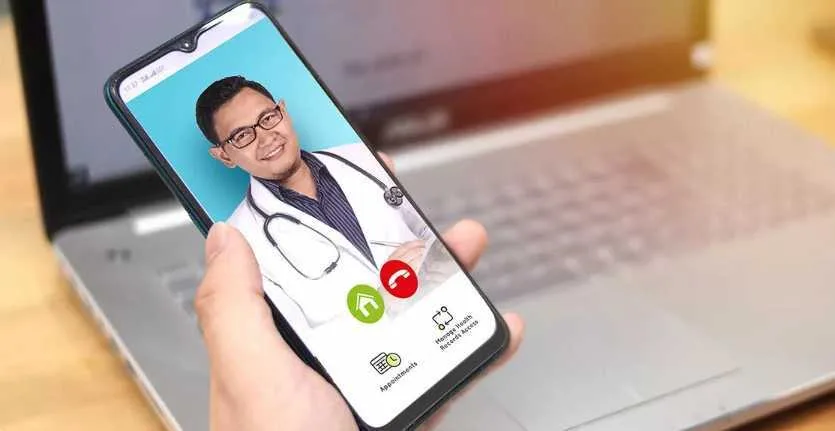Telemedicine applications are a readily available option that bridges the gap between patients, physicians, and health systems, allowing everyone, particularly symptomatic patients, to stay at home and connect to care providers remotely via online video chats, EMR/EHR, e-Prescriptions, and medical data sharing.
Doctors and healthcare businesses have a well-suited platform for their employee wellness plan because of the boom in telemedicine app development during the pandemic.
Remote consultation is the pinnacle of the telemedicine app’s numerous benefits, safeguarding patients and physicians from virus transmission while not breaking lockdown precautions.
A telemedicine app solution allows clinicians to expand their medical expertise to locations where there is no or limited access to physicians and adequate medical treatment, hence encouraging broad medical care.
Benefits Of Telemedicine App Development For A Hospital or Clinic
There are a lot of benefits to telemedicine app development, and here are some of the biggest:
- Easy to use: Telemedicine apps make it possible to see a doctor even if you’re not at home or work. You don’t have to worry about scheduling an appointment and making sure there’s someone who can drive you to that appointment. Instead, you can just get on your phone and use the app to talk with a doctor right then and there! This can be especially important for those who are homebound or unable to travel easily.
- Reduced Healthcare spending: Doctors no longer need to spend time traveling back and forth between their offices and patients’ homes or workplaces—they can simply use their telemedicine apps to connect with patients as needed. This saves them time, which means they can charge less for their services without sacrificing quality.
- Information exchange: When you’re using a telemedicine app, your doctor will be able to pull up all kinds of information about your medical history without having to ask for it again from each individual doctor who’s been treating you over the years (or checking it out themselves). This helps keep costs down by reducing unnecessary
- Time management for Doctors: Doctors are in a unique position to benefit from telemedicine app development. For one thing, doctors have a very demanding job that requires them to be on call at all times. This can make it difficult for them to find the time to go out of their way to see patients who may not be near their office. Telemedicine apps allow doctors to connect with patients via video conference, or even over the phone. Rather than having to travel and spend time away from home and family, doctors can meet with patients remotely, saving time and money.
- Access to healthcare: Another benefit is easier access to healthcare. With more people living far away from hospitals and clinics, it becomes harder for some people to get treated when they need it most. Telemedicine apps allow medical professionals like doctors and nurses to treat patients regardless of where they live or what kind of environment they’re in. This means more people will be able to access proper treatment when they need it most.
Benefits for Doctors
Doctors are faced with a lot of challenges in their day-to-day life. They have a huge workload, strict deadlines and multiple patients to look after. The pressure can be overwhelming at times. Thus they are direct beneficiaries of software development for healthcare apps and they are the first stakeholders of any healthcare software application development.
If you are an employee at the hospital or a doctor trying to manage your business from home then there are chances that you may not be able to manage your work efficiently hence the software development for healthcare apps had been one of the requirements for a long. Healthcare software application development reduces the cost of healthcare operations and provides seamless connectivity helping generate more ROI for providers, hospitals, and clinics.
For one thing, Telemedicine helps doctors manage their time more effectively. With a telemedicine app, doctors can schedule appointments with patients remotely and still be able to take care of other pressing issues at the same time. They will not have to worry about having to drive all the way to their clinic just because they have something else in mind that day. The biggest advantage of telemedicine is that it allows doctors to spend more time with their patients, rather than juggling paperwork and administrative tasks. This means that patients get more personalized care, which can improve their outcomes and reduce costs.
Benefits for Patients
Healthcare has been undergoing a radical shift in recent years. Application development solutions in healthcare had been the need of the hour since mobile disruption. As medical technology continues to advance at a breakneck pace, some of the most significant changes have come in the form of telemedicine apps or digital health software development. Healthcare app development solutions such as telehealth software or Telemedicine app development solution are revolutionizing the way patients receive their care.
There are several benefits to patients using these apps, including:
- There’s no traveling time or cost.
- There’s no need to take time off work or arrange for a child or eldercare.
- Options are available on-demand anywhere you have access to the internet.
- Specialists are available at all times of day and night—so they can see you at your convenience!
- There’s a Lower Chance of Contracting a New Illness: You won’t have to worry about germs in public places like waiting rooms anymore!
- Removes any concerns about kids or elder care.
- Spending less time in the waiting room: You can complete your visit right from home.
Customised healthcare application development or Telemedicine apps are making it easier than ever before for patients to access quality health care without having to leave their homes.
Improving Healthcare Through Telemedicine App Development
The advancements in telemedicine have opened new frontiers in the healthcare industry. It has made new studies, research, development, and training of medical students much easier.
Moreover, telemedicine solutions use simple APIs to store data about patients, which acts as the digital version of the patient’s medical record. As a result, telemedicine solutions have become a popular method of treatment for both general practitioners and specialists. But it doesn’t stop there.
In April, 64 percent of U.S. broadband households reported using a telehealth service in the previous 12 months. The top reason people use telehealth services is convenience, and the ability to speak with the provider of their choice.
Before you begin development, you must identify your needs. You must establish a tech stack that includes your application platform, development tools, hardware needs, and talent requirements.
Many telemedicine startups start by creating a prototype so that they can determine if the concept is feasible. Developers and designers will build and implement the application, while QA engineers will review and recommend improvements. Ultimately, you must develop a telemedicine application that helps medical practitioners increase their business.
When done right, telemedicine improves administrative and clinical operations. In critical situations, it provides emergency care to patients. In non-critical situations, it can provide care to patients suffering from chronic diseases. Moreover, if a hospital has the personnel and equipment to perform telemedicine, it can compensate for the shortage of resources. The medical records can be exchanged in real-time, which can reduce the overall health risk of the patient.
In-app payments
In-app payment for consultations is a convenient way of ensuring patient comfort. Patients can pay for their consultations inside the telehealth app, allowing them to view transaction history.
Keeping a record of patient’s data
Keeping a record of the patient’s data is vital for a number of reasons, including to ensure that the doctor and patients are communicating with each other. The patient’s profile will allow the physician to view their previous lab tests and other information, while the lab technician will be able to process the request.
Recording the patient’s data will also help reduce the possibility of error when developing a telemedicine application, which is an essential part of any health-care-related project.
Regulatory compliance
In developing a telemedicine application, it is important to follow a series of compliance regulations. These regulations apply to the use of personal patient data and should be followed for both technical and legal reasons.
These regulations are specific to the country in which the telemedicine app will be used. They also include HIPAA. Navigating the minefield of compliance regulations can be challenging.
Security.
When it comes to security, your telemedicine application development team needs to focus on data accessibility and storage. Whether your app will allow the care practitioners to view a full record of a patient or only certain blocks of data, it is essential that data is protected from hackers. The telemedicine app development team should also take into account the complexities of healthcare laws and regulations, such as HIPAA. There are strict rules and regulations for healthcare, and any breaches of these laws can be extremely costly.
Adding advanced features
Telemedicine applications need to have appointment scheduling and calendaring features. Appointment booking and management should be seamless for patients and doctors. Patients can create and edit appointments, postpone and cancel them, and view their calendar.
Adding patient-specific features such as video calls, photo-based consultations, and geolocation are also essential. These can help the doctor understand the environment around the patient. You can also integrate other features, such as the patient’s insurance information.
Average cost of telemedicine app development
Telemedicine application development can cost between $35,000 to $300,000+
Store & Forward – $35,000 to $65,000
Remote Monitoring – $50,000 to $200,000+
Real Time Interactive $70,000 to $150,000+
Extended Summary
To develop a successful telemedicine app, it is crucial to integrate the right features into the design. Mapping out the features before development will help you define the scope and timeline of the app. You can also incorporate feedback from users to make changes and refine the app. In this way, you will have a great chance of success! And, mapping out the features will make the development process more flexible. After all, your users will be your customers!







